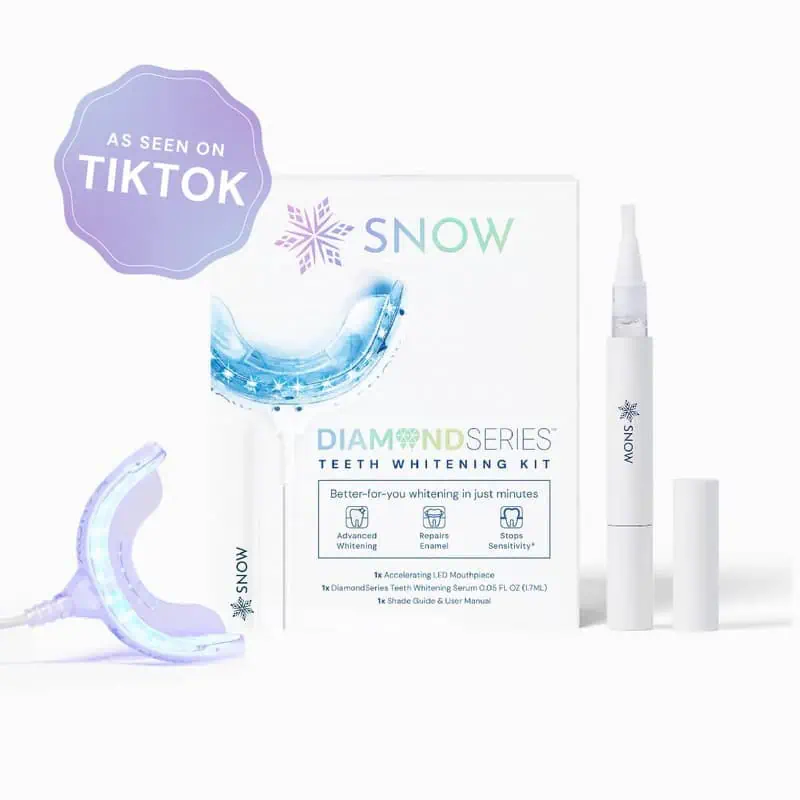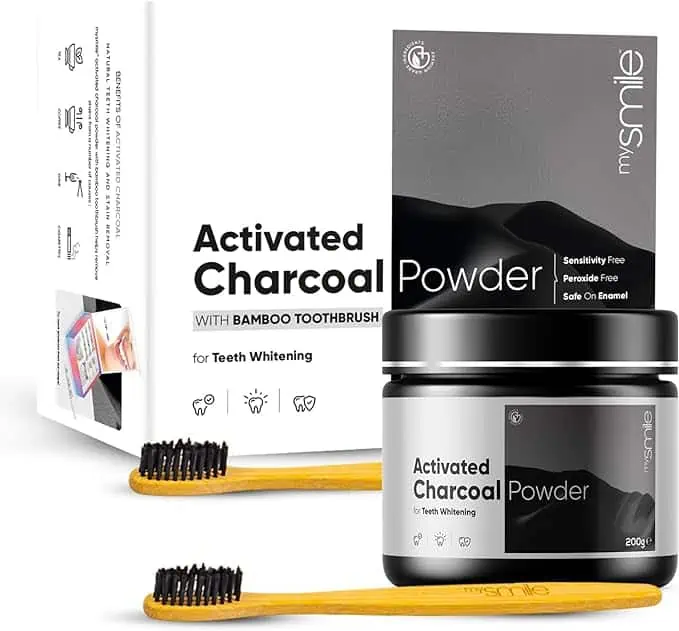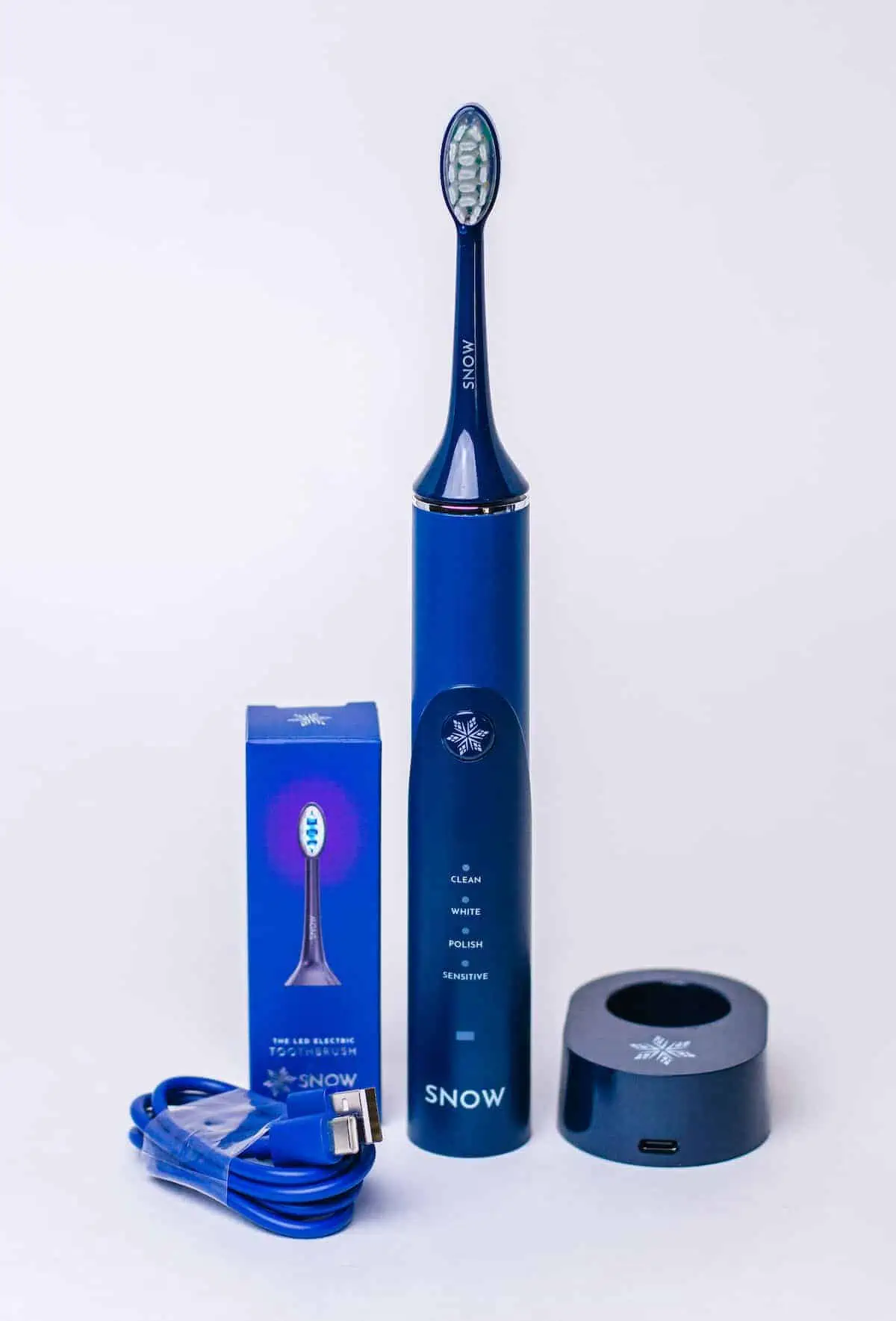What causes yellow teeth, and more importantly, how to remove yellow stains from teeth?
In this article, we’ll delve into the common causes of yellow teeth and provide some solutions for how to remove stains and aid that tooth whitening process. We’ll also answer the following questions about yellow teeth, brown stains and more:
- Why are my teeth yellow?
- How do I get rid of yellow teeth?
- What is the best way to whiten yellow teeth?
- Can yellow teeth be whitened naturally?
- Can yellow teeth be whitened at home?
Read on to learn more about how to get rid of yellow teeth and remove brown stains to keep your teeth looking bright and healthy.
With so many different cosmetic dental solutions to try – both natural and chemical – we hope you find one that works for you so you can get back to smiling with confidence.
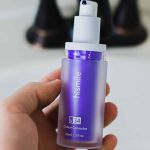
- The Hismile V34 Colour Corrector Serum is like purple shampoo for your teeth!
- It instantly neutralizes yellow tones, making teeth appear whiter and brighter
- Use it anytime for a whiter smile, with no harm to your enamel
Find out more in our full Hismile V34 review!
Foods that stain teeth
Best Products for Yellow Stains | ||
Snow Teeth Whitening Kit |
| |
MySmile Activated Charchol Powder |
| |
Snow LED Whitening Toothbrush |
| |
In This Article
How to remove yellow stains from teeth
Removing yellow stains from teeth is often easier said than done. However, there are several approaches you can take depending on your budget, the severity of the staining, the results you want, and how quickly you want to see a difference.
First, get them properly cleaned
Before you try to get rid of yellow stains from teeth with whitening products, you might want to pay a visit to a hygienist. Dentists usually recommend getting a scale and polish every six months. This process removes any tartar build-up and then polishes the surface of your teeth.
You might be surprised at how much brighter your teeth appear after this, especially if it’s been a while since you had your teeth professionally cleaned. Hygienists can also use a special tool which emits a high-powered water jet to instantly remove really stubborn brown stains from teeth, like those caused by nicotine, tea and coffee.
Can yellow teeth be whitened at home?
There are many affordable ways to whiten your teeth at home. You can buy toothpaste, strips, pens, bleaching trays, LED kits and more in your bid to brighten your smile. Or, there are various natural ways to remove stains from teeth at home. Naturally, each of these methods varies in its cost, effectiveness and ease of use.
Whiten yellow teeth with a whitening kit
A home whitening kit will generally give the best results of all the various home remedies for yellow teeth, although it may not whiten yellow teeth as dramatically as laser whitening at the dentist.
Snow professional teeth whitening systems are produced in the USA and use hydrogen and carbamide peroxide in a formula designed to be suitable for sensitive teeth.
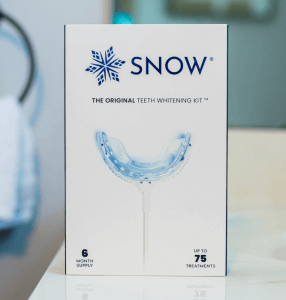
Rather than applying the gel using mouth trays, Snow’s revolutionary system lets you paint the serum directly onto your teeth. This means it uses a lot less gel and there is no risk of it squirting out and damaging your gums.
Included in the basic Snow home whitening kit is:
Snow’s Teeth Whitening Kit
- A mouthpiece with built-in LED lights
- 3 whitening wands (1 wand = 21 treatments)
- 1 extra-strength whitening wand
- Teeth whitening progress tracker
Check out our full write-up of Snow for more details, or read about the wireless kit.
If you’re considering at-home treatment, check out our picks for some of the best whitening kits in the UK this year and learn how to choose the right one for you. You may also be interested in teeth whitening strips.
Use a stain-removing toothpaste

There are a lot of different kinds of toothpaste out there which say they will get rid of yellow teeth, but results can vary widely. We’ve picked out some of the best options in our guide to the best whitening toothpaste.
Crest Max White Expert Anti Stain Toothpaste is a popular choice for teeth whitening in the UK, and for good reason. As a leading brand in this area, Crest offers an Advanced Brighteners System that has been clinically proven to make teeth appear instantly whiter by reflecting blue light.
Additionally, its dual-action formula contains the same whitening ingredient that dentists use to remove deep-set tooth stains.
With this toothpaste, you can achieve noticeable results quickly and effectively. For best results, be sure to brush for two minutes twice daily.
What is the best toothbrush for yellow teeth?
If you want to remove yellow stains from your teeth, there are various manual and electric toothbrushes available which are specially designed to polish teeth and remove surface stains.
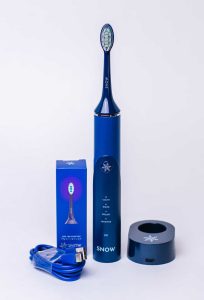
Our top pick for the best electric toothbrush for whitening is the Snow LED whitening toothbrush. It effectively removes plaque and simultaneously whitens your teeth thanks to its built-in whitening technology and blue LED light, which has been shown to enhance the whitening process.
This toothbrush includes a timer and uses sonic technology, vibrating at a rate of up to 30,000 times per minute. It offers four modes to customise your brushing experience – clean, whiten, polish, and sensitive – and has a long battery life. Plus, it comes with two replacement brush heads.
Bear in mind that a special whitening toothbrush won’t make up for a poor brushing technique. Make sure you’re brushing and flossing properly in the first place rather than relying on a new toothbrush to fix your problem.
How to make teeth white naturally from yellow
Before turning to chemical whitening methods, you might want to try some natural ways to fix yellow stains. A quick online search will bring up all kinds of alternative techniques that people swear by, but here are some of the most popular:
- Activated charcoal
- Coconut oil pulling
- Baking soda
- Apple cider vinegar
- Natural or homemade toothpastes
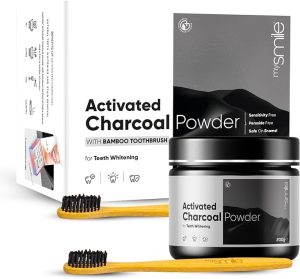
One of the best natural products for yellow stain removal is MySmile’s Natural Charcoal Teeth Whitening Powder. It has an advanced EU formula that safely and effectively removes surface stains from your teeth, leaving them looking whiter.
The ingredients include activated bamboo charcoal, peppermint oil and sodium bicarbonate—all of which help remove cavity-causing bacteria while also reducing plaque build-up on teeth.
Unlike other teeth-whitening products, this powder contains no harmful chemicals and has no side effects. It’s safe to use for short periods of time, and it is designed specifically with sensitive teeth and gums in mind.
It also reduces bad breath naturally as part of its formula, and it has a fresh peppermint taste.
You’ll notice that your teeth are whiter and less sensitive after just one use!
We have a full article on the benefits and risks of activated charcoal for teeth whitening so check that out if you want to know more.
In-office treatments to get rid of yellow teeth
For more drastic results you’ll need to head to the dentist. Brown stains on the back of teeth or between teeth in particular can be slow to respond to DIY treatments.
Professional whitening
Probably the most effective way to remove yellow stains from teeth is to visit your dentist for a course of professional whitening. Using lasers or LEDs with concentrated bleaching products, you can get results in a single visit. It won’t come as a surprise that these treatments are also the most expensive – see what teeth whitening costs in the UK.
Just be sure to avoid beauty therapists and other unqualified individuals offering whitening services illegally. Only trained dental professionals are permitted by law to carry out whitening procedures on patients.
Want to know more about different whitening methods and how effective they are? We covered this topic in much more detail in our guide to teeth whitening.
Veneers
If your teeth are not just discoloured but also crooked or chipped, you may want to kill two birds with one stone by getting veneers. These thin covers are placed directly onto your existing teeth. They can be made to match your natural teeth if you just need one or two, or you can transform your smile with veneers across all your visible teeth.
There are two main types of veneers, composite and porcelain. Composite resin veneers are more affordable, but they aren’t as durable and natural-looking as porcelain veneers.
It’s also possible to get DIY clip-on veneers like instasmile or Secret Veneers which involve you taking teeth impressions at home. The product you receive back can look quite fake, and we wouldn’t recommend these for long-term use. However, if you want a way to hide your yellow teeth for the occasional date or night out, these will do the job.
If you are considering these clip-in veneers but are looking for something a little better than DIY ones, Snap-On Smile clip-in veneers are dentist prescribed. They are still a temporary measure, but these ones may not have the same ill effects on your dental health as some cheaper brand clip-in veneers.
What causes yellow teeth?
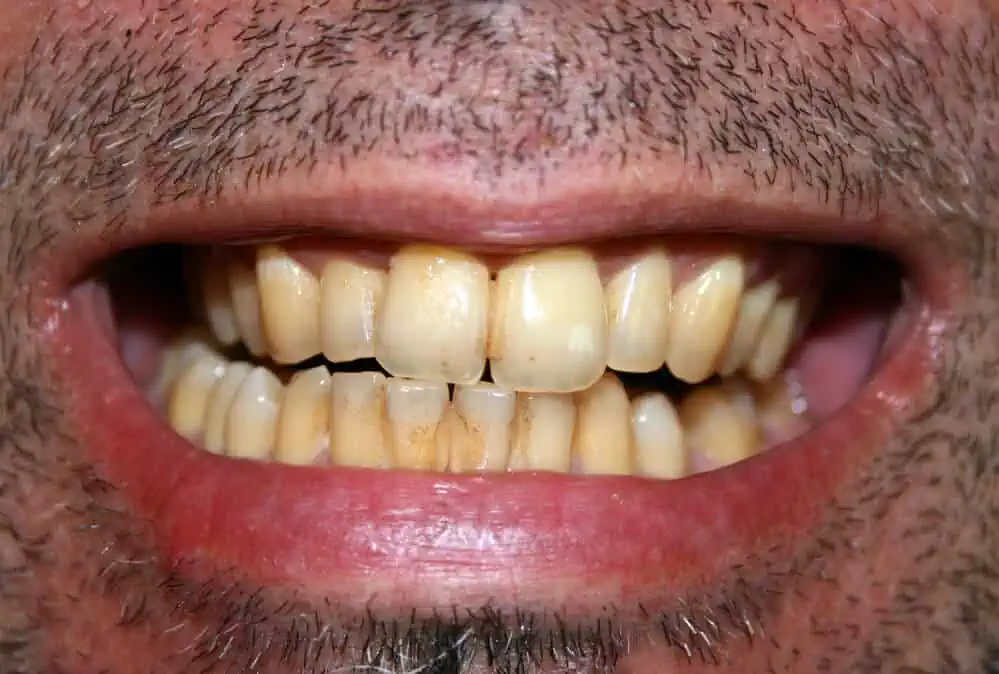
Yellow teeth can be caused by poor oral hygiene, tobacco use, certain medications, ageing, and the consumption of certain foods and beverages. These factors can lead to the accumulation of plaque, the loss of enamel, and the staining of the teeth. Let’s jump in and discuss this in further detail.
Smoking
Smoking causes yellow teeth and brown stains because of the tar, nicotine and other chemicals carried in the smoke. These seep into the pores in your tooth enamel, staining its natural colour. Tobacco teeth stains can be quite stubborn and difficult to remove.
A study conducted in 2005 found that 28% of smokers had moderate to severe levels of tooth discolouration, compared to 15% of non-smokers. The study also revealed that smokers were generally less satisfied with the state of their teeth.
Does vaping stain teeth?
Vaping may not discolour teeth to the same degree, but e-cigarettes still contain nicotine which becomes yellow when it mixes with oxygen.
Smoking making your teeth yellow is not the only oral health problem you need to worry about, either. For example, nicotine causes gums to recede and can lead to gingivitis and periodontitis.
Bad oral hygiene
If you notice a yellow buildup on your teeth, it’s probably plaque or tartar. Plaque is formed of oral bacteria, and food and drink particles that aren’t cleaned properly from your teeth. Over time, plaque hardens to form tartar, which can only be removed by a dentist or hygienist.
This hard yellow stuff can form on or between your teeth if you don’t brush and floss often enough or thoroughly enough. Not only does it look bad, it contributes to bad breath and a whole load of other oral health complications. If you notice brown stains between teeth or around areas of tartar, it may be an early sign of tooth decay.
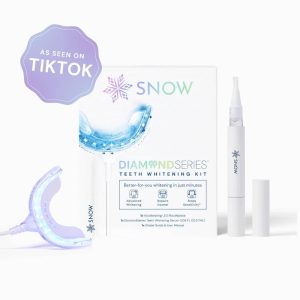
- 97% saw real results after a SINGLE USE
- 100% saw results after their full treatment
- No sensitivity
- 30-day money-back guarantee
- 75+ treatments per box!
Foods that stain teeth
It shouldn’t come as a big surprise that the things you put into your mouth have an effect on the colour of your teeth. If your teeth are stained yellow, it might be because of foods such as these:
- Coffee and tea
- Red wine
- Curries
- Tomato sauces
- Berries
- Soy sauce
- Balsamic vinegar
- Beetroot
There are other foods and drinks which, although they don’t cause staining themselves, contain acids that eat away at your tooth enamel. This reduces the ‘whiteness’ of your teeth and also leaves them more susceptible to staining. Watch out for:
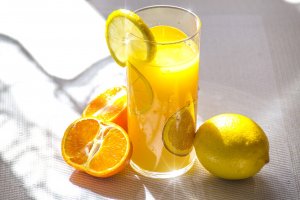
- Fizzy drinks (heavily coloured ones can also cause stains)
- Citrus fruits and juices
- Sports drinks
- Sugary foods
- Artificial sweeteners
- White wine and many other alcoholic drinks
Rinsing your mouth with water after consuming these products will help minimise the damage from any acid.
Ageing: Do teeth yellow with age?
As if getting older wasn’t bad enough, it’s natural for your teeth to become yellow as you age. This is because the protective enamel layer becomes thinner, revealing more of the yellow dentin underneath.
Genetics: Is it natural to have yellow teeth?
If you have had yellowish teeth all your life, your parents may be to blame. Genetic variances can affect tooth colour and enamel porosity – and more porous enamel is more liable to stain.
Medication: Do antibiotics make teeth yellow?
Some antibiotics such as tetracycline and amoxicillin can affect the colour of teeth, especially in younger children, causing permanent intrinsic teeth staining. Drugs prescribed to adults for allergies and high blood pressure may also have this side effect. Speak to your doctor if you’re concerned about this.
Certain medicated mouthwashes can cause staining because of the ingredient chlorhexidine. You can minimise teeth stains from mouthwash by using it only for the prescribed duration. Even if your teeth do become yellow after using mouthwash, these stains can be removed quite easily.
Diseases that cause yellow teeth
Some illnesses might cause yellow stains or discoloured teeth. Patients who undergo chemotherapy or radiation treatment for cancer may also find their teeth turning a brownish hue.
Teeth whitening treatment is not usually covered by the NHS, but exceptions may be made in cases where there is a medical reason for the discolouration.
How to prevent yellow teeth
Whatever the shade of your teeth now, you can help prevent any further yellowing by taking good care of them. This means brushing your teeth twice a day and flossing at least daily. Use a fluoride toothpaste as this helps strengthen enamel.
You can also use mouthwash, but don’t rinse immediately after brushing since this can wash the fluoride away (more about how to use mouthwash here).
If you’ve got stained teeth from smoking, or you’re worried about nicotine staining your teeth, consider quitting. It’s not just your teeth that will benefit.
And remember that list of foods and drinks that stain or damage teeth? Try to limit your consumption of these, or at least rinse your mouth with water after you have had them.
What you eat not only plays a role in your overall health, but it may also determine the colour of your smile. Many people eat and drink foods every day, not realizing that some of those foods are slowly staining their teeth overtime. However, you can work to prevent stained teeth by:
- Limiting stain-causing drinks, like coffee, tea, soda, and wine.
- Being sure to rinse your mouth with water after consuming fruits like blueberries, pomegranates, and others that have natural dyes that can stain your teeth.
- Brushing your teeth in the morning and at night, for two minutes each time, using a whitening toothpaste if desired.
- Flossing each day.
- Seeing your dentist for deep cleanings and whitening treatments if needed.
Dr. Ania Mohelicki
Yellow teeth in children
A child’s milk teeth are usually whiter than their permanent teeth, so don’t be alarmed if their first adult teeth seem quite yellow in comparison with the remaining baby teeth. But if you’ve noticed that your child or toddler has yellow baby teeth, it’s worth checking that it’s not a sign of more serious problems.

Children’s teeth (both baby and adult) may become discoloured for many of the same reasons as adults’, i.e. diet, poor oral hygiene, genetic factors, medications, and illnesses.
Take the same precautions as you would for yourself; brush well twice a day and limit sugary snacks and other foods that may damage enamel. If you have trouble brushing your child’s teeth thoroughly, consider investing in an electric toothbrush which might make the task more enjoyable.
Also take your child to the dentist for regular checkups so any dental problems can be addressed early on. If you are concerned about the shade of your child’s teeth, mention it to your dentist at your next visit. Avoid using any whitening products – even natural ones – on your child, unless your dentist recommends you do so.
Read more about the problems that can affect children’s teeth in our guide to oral health for kids.
Myths about yellow teeth
Many of the ideas people have about white and yellow teeth are factually inaccurate. If you’ve been believing any of these things, you’d better think again…
Myth 1: Teeth are naturally bright white
A few lucky people may be blessed with pearly white teeth, but most people’s teeth are naturally a couple of shades darker. In fact, really bright white teeth can actually look quite unnatural. Natural teeth are usually tinged with yellow or grey.
To understand the reason why let’s take a look at the anatomy of the tooth. On the outside, we have a layer of enamel, which is a blueish-white colour. But enamel is translucent, which allows the layer of dentin below to show through.
Dentin is a darker yellow colour, and this is what makes teeth off-white. When the enamel becomes too thin, it can even give the appearance of translucent teeth.
So, it’s really the shade and thickness of your tooth enamel that determines your tooth colour. For some people, it’s natural to have yellow teeth. If you brush and floss every day but your teeth are still not white, you may well be one of those people with naturally yellow teeth.
Myth 2: Off-white or yellow teeth are bad or unhealthy
This is a myth pushed on us by companies who want people to spend hundreds of pounds getting a “perfect” Hollywood smile. A 2018 survey revealed that 46% of under-34s believe that discoloured teeth mean bad breath, while 44% think it’s a sign of poor hygiene. But neither of these things are necessarily true.
Although yellow plaque deposits and heavy brown stains on teeth are not healthy, it’s quite possible for perfectly clean and healthy teeth to be a shade of yellow.
Teeth whitening procedures often work by stripping or penetrating the outer layer of enamel, which weakens teeth if repeated numerous times. So in many cases, yellow teeth are stronger than bright white ones – as long as they are kept clean.
Of course, you may still want to improve the aesthetic appearance of your smile by whitening your teeth, and we have some more information about that below.
Myth 3: You get yellow teeth with braces
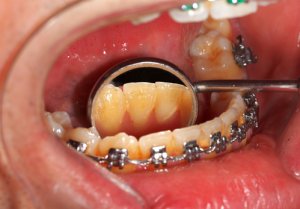
Some people do end up with yellow, stained teeth from wearing braces, but it’s not necessarily the braces themselves that are to blame. Bacteria can easily build up around the brace brackets so it’s important to be extra careful with cleaning your teeth and flossing during this time. If you keep up a good oral hygiene routine, wearing braces needn’t result in discoloured teeth.
If you’re worried about your teeth turning yellow with braces, you could consider a different style of brace. Lingual braces are fixed behind your teeth so any marks they leave are hidden inside your mouth. Alternatively, “invisible” braces are removable so you can clean your teeth as normal.
Myth 4: Brits have worse teeth than Americans
Perhaps there is some truth in this stereotype, but it could simply be because Americans spend more on cosmetic dentistry than Brits. In 2015, just 3% of Brits had had their teeth whitened, compared to 14% of Americans.
But with increasing pressure from the media to have a perfect smile, the cosmetic dentistry industry is quickly picking up speed in the UK. A survey from 2018 found that the number of people who had whitened their teeth had jumped to 24%. Perhaps it won’t be long before we can finally shake off our reputation as a nation with bad teeth.
Conclusion
The best way to remove stains from your teeth will depend on what has caused the staining and how yellow your teeth are naturally. Surface stains can be removed with a good dental cleaning. Then, there are plenty of at-home and in-office solutions to get rid of yellow teeth and give you a brighter smile.
We recommend visiting your dentist or hygienist first. A professional cleaning can do a lot to get stains off teeth and make them look less yellow. If your teeth are in good condition but still a bit yellow or brown, you can explore your options for whitening.
A good oral hygiene routine with a carefully selected toothbrush and toothpaste will also go a long way towards protecting your teeth from staining.
FAQs
Why do I have yellow teeth during pregnancy?
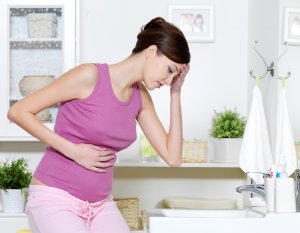
Pregnancy can take a toll on your oral health for a number of reasons. Hormonal changes may make teeth more susceptible to plaque buildup, causing a yellow appearance. Pregnant women often experience inflamed or bleeding gums as well.
Iron supplements, which pregnant women are often advised to take, can cause dark spots on teeth. And if you experience morning sickness, acid from vomiting or reflux can start to erode your tooth enamel.
Pay special attention to your oral hygiene routine while pregnant and take advantage of free NHS dental visits.
If you experience yellow teeth during pregnancy and you want to whiten them, ask your dentist which products are safe to use. They will probably advise you to avoid peroxide-containing products until after your baby is born.
There is no evidence that these cause harm to you or your developing baby, but equally there haven’t been any studies to show they are safe. These products also won’t do your sensitive gums any good. It is safe to use a whitening toothpaste while pregnant, though.
Do tea and coffee make your teeth yellow?
Unfortunately, yes. Tea and coffee are some of the worst culprits when it comes to staining teeth, especially as most of us Brits drink one or the other every day.
The staining occurs when tannins, organic compounds found in these plants, get absorbed by porous tooth enamel. Tea contains higher levels of tannins than coffee, with green and black teas having the highest concentrations. The stronger your brew, the more likely it is to stain your teeth.
You can reduce the chances of tea and coffee staining your teeth by rinsing with water as soon as you finish your drink. And, of course, keep brushing twice a day. A good whitening toothpaste will also help keep stains at bay.
Does turmeric stain teeth?
Counter-intuitively, it has recently gained popularity as a natural stain remover. There isn’t any conclusive research into the effects either way, but turmeric is known to have other oral health benefits.
Can yellow teeth become white?
Yes. Whatever your natural tooth colour, there are various treatments that can lighten the shade. You could try an inexpensive home whitening kit or see a dentist for professional bleaching. Your results will depend on the method used and the type and degree of tooth staining.
What are the best braces colours for yellow teeth?
If you’re getting metal braces, you’ll have a choice of colours for the small elastic bands that fit over each bracket to hold the wire in place. The colour(s) you choose can make a big difference to the appearance of your teeth and smile.
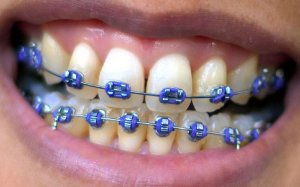
You might think that white is the obvious choice if you want a whiter smile, but that’s not the case if your teeth look yellow rather than white. The contrast between the bright white bands and your not-so-white teeth will make them look even more discoloured. Similarly, yellow or gold bands can highlight the yellowness of your teeth.
Darker colours will actually make your teeth look whiter, although they will also make your braces more obvious. Our guide to coloured braces has more advice for choosing a shade that suits you.
For a more inconspicuous way to straighten your teeth you may opt for ceramic braces rather than metal. Ceramic braces come with either clear or tooth-coloured brackets. As a general rule, clear brackets look better with naturally yellower teeth while tooth-coloured brackets look better with whiter teeth. It’s the same logic as with coloured elastics – white materials make your teeth look darker in comparison.
How do I remove stains from teeth instantly?
Toothpastes and whitening kits tend to give gradual results over several days or more. To whiten yellow teeth fast you’ll need to visit a dentist for a deep cleaning or for professional whitening.
How do you get rid of brown stains in between teeth?
Flossing can help you keep that space between your teeth clean, but only a dentist or hygienist will be able to remove those stubborn brown stains from your teeth.
How do you get rid of black stains on teeth?
It depends what caused them. Teeth stains are usually yellow or brown. Black or grey stains can be caused by certain medicines but they can also be a sign of tooth decay.
National Center for Biotechnology Information: An overview of tooth discoloration: extrinsic, intrinsic and internalized stains. Consulted 7th Jan 2023.
Dentistry Online: Smoking versus vaping: which is worse for your teeth? Consulted 7th Jan 2023.
Queen Victoria Hospital NHS Foundation Trust – QVH: The effect that smoking has on your oral health. Consulted 7th Jan 2023.
Oral Health Foundation: Tooth Whitening. Consulted 7th Jan 2023.






